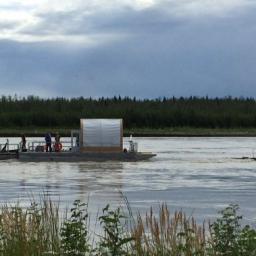Verizon, T-Mobile oppose delaying LTE-U to test WiFi interference claims
 The debate over LTE-Unlicensed is heating up after the Wi-Fi Alliance asked the Federal Communications Commission to postpone equipment testing that uses unlicensed spectrum until the Wi-Fi industry group can run its own tests to make sure that the technology does not interfere with traditional Wi-Fi. Recently, U.S. carriers Verizon Wireless and T-Mobile US teamed up with major equipment manufacturers Alcatel-Lucent, Ericsson and Qualcomm to write its own letter urging the FCC to oppose the Wi-Fi Alliance's proposal, which could halt Verizon Wireless' plans to begin deploying LTE-U in the 5 GHz band beginning in 2016, as well as T-Mobile US' goal of using the technology in its smartphones by the end of this year.
The debate over LTE-Unlicensed is heating up after the Wi-Fi Alliance asked the Federal Communications Commission to postpone equipment testing that uses unlicensed spectrum until the Wi-Fi industry group can run its own tests to make sure that the technology does not interfere with traditional Wi-Fi. Recently, U.S. carriers Verizon Wireless and T-Mobile US teamed up with major equipment manufacturers Alcatel-Lucent, Ericsson and Qualcomm to write its own letter urging the FCC to oppose the Wi-Fi Alliance's proposal, which could halt Verizon Wireless' plans to begin deploying LTE-U in the 5 GHz band beginning in 2016, as well as T-Mobile US' goal of using the technology in its smartphones by the end of this year.Companies such as Microsoft and big cable companies support further testing. Microsoft said it worries that the LTE-U signal could "degrade the performance of services delivered over Wi-Fi." Big cable TV and Internet companies are worried that their investments in Wi-Fi hot spots throughout the country could be greatly impacted if there is interference from LTE-U. "Research demonstrates that both LTE-U and LAA would severely decrease the performance of any nearby Wi-Fi network. Widespread deployment of LTE-U or LAA would therefore harm American consumers, schools, and innovators by dramatically reducing the utility of the unlicensed bands for everyone but the companies that already hold licensed spectrum," the NCTA said in its letter to the FCC. "Furthermore, there is already a growing amount of research, such as that published by Google and CableLabs"indicating that Wi-Fi networks will be negatively impacted by the current version of LTE-U technology. The risk to users who depend on Wi-Fi every day for their connectivity needs is too great."
